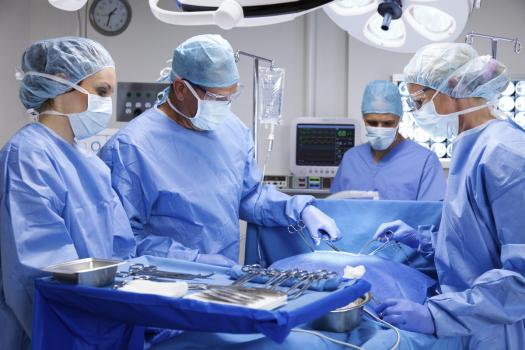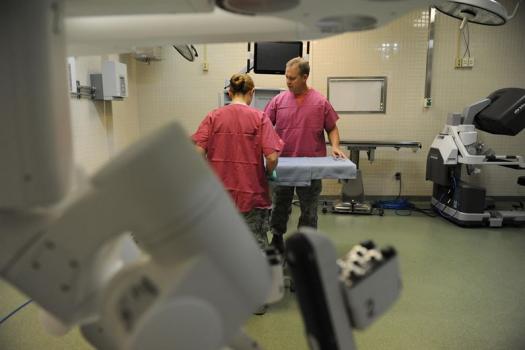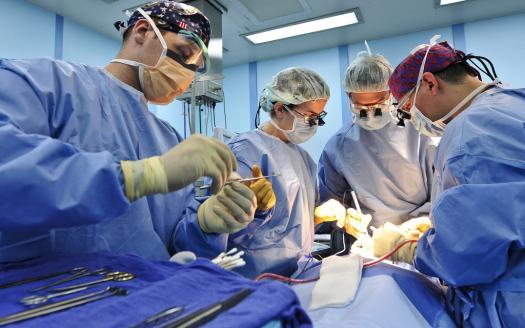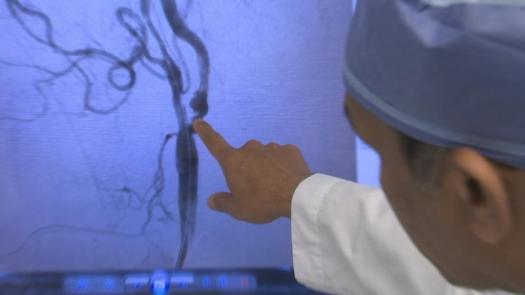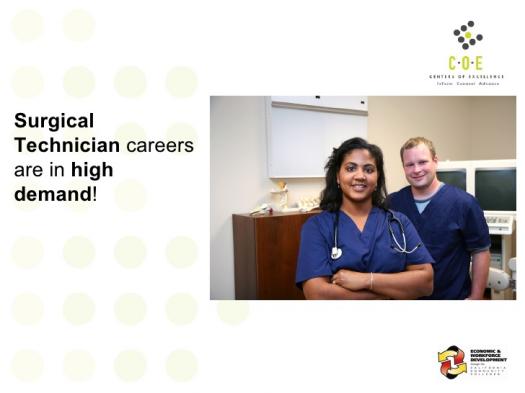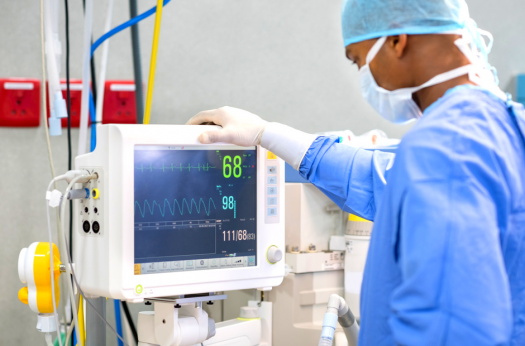Technician In Surgery Ts-c Practice Test

Do you want to work with great surgeons and make a safe environment for patients in the operating room? Then you are aspiring to become a Surgery Technician. These are allied professionals who are responsible for various tasks before, during and after operations. The way to go is to take the Technician in Surgery TS-C exam administered by the National Center for Competency Testing.
Brush up your knowledge on the subject by taking this quiz.
- 1.
What is the most important process of patient education?
- A.
Diagnosis
- B.
Planning
- C.
Administration of drugs
- D.
Assessment
Correct Answer
D. AssessmentExplanation
Assessment is the most important process of patient education because it involves gathering information about the patient's condition, needs, and preferences. Through assessment, healthcare providers can identify the patient's knowledge gaps, learning styles, and potential barriers to learning. This information is crucial for developing an individualized education plan and selecting appropriate teaching strategies. Without a thorough assessment, patient education may not effectively address the patient's specific needs and may not lead to improved health outcomes.Rate this question:
-
- 2.
Which of these is an intraoperative patient care record?
- A.
Incision care
- B.
Ambulation
- C.
Patient position on the operating room table
- D.
None of the above
Correct Answer
C. Patient position on the operating room tableExplanation
An intraoperative patient care record refers to documentation that is specific to the care provided during a surgical procedure. It includes information such as the patient's position on the operating room table, vital signs, medications administered, and any complications or interventions during the surgery. Incision care and ambulation are not specific to the intraoperative period, while patient position on the operating room table is directly related to the surgical procedure and therefore considered an intraoperative patient care record.Rate this question:
-
- 3.
What is the endgame of a therapeutic communication?
- A.
Establish a relationship between the technician and the surgeon
- B.
Documenting every surgical progress.
- C.
Improve health system
- D.
Establish anot effective relationship between the Establish an effective relationship between the patient and the technician
Correct Answer
D. Establish anot effective relationship between the Establish an effective relationship between the patient and the technicianExplanation
The endgame of therapeutic communication is to establish an effective relationship between the patient and the technician. This type of communication is focused on building trust, empathy, and understanding between the healthcare provider and the patient. It involves active listening, open-ended questioning, and non-judgmental responses to facilitate effective communication and promote the patient's well-being. By establishing a strong therapeutic relationship, the technician can better understand the patient's needs, provide appropriate care, and enhance the overall healthcare experience.Rate this question:
-
- 4.
An internal defibrillator paddle is a
- A.
Category-A critical surgical item
- B.
Category-D critical surgical item
- C.
Category-F critical surgical item
- D.
Category-I critical surgical item
Correct Answer
D. Category-I critical surgical itemExplanation
An internal defibrillator paddle is categorized as a Category-I critical surgical item because it is an essential and life-saving device used during surgical procedures. Category-I items are considered to be of the highest priority and are crucial for patient care and safety. The internal defibrillator paddle is used to deliver electrical shocks to the heart in order to restore a normal heart rhythm during cardiac arrest or life-threatening arrhythmias. Its importance in saving lives and its direct involvement in surgical procedures make it a Category-I critical surgical item.Rate this question:
-
- 5.
Which of these devices requires more of a chemical sterilisation rather than a steam sterilisation?
- A.
Stethoscope
- B.
Thermometer
- C.
Fiberoptic endoscope
- D.
None of the above
Correct Answer
C. Fiberoptic endoscopeExplanation
A fiberoptic endoscope requires more chemical sterilization rather than steam sterilization because it is a delicate instrument with sensitive components that can be damaged by high temperatures. Chemical sterilization methods, such as using disinfectants or ethylene oxide gas, are more suitable for ensuring the endoscope is thoroughly sterilized without causing any damage. Steam sterilization may not be suitable for this device due to the potential risk of heat-induced damage.Rate this question:
-
- 6.
What is the ideal time for all cyrosurgical instrments to be sterilised?
- A.
30 minutes
- B.
45 minutes
- C.
5 minutes
- D.
Manufacturers' directive
Correct Answer
A. 30 minutesExplanation
The ideal time for all cryosurgical instruments to be sterilized is 30 minutes. Sterilization is a crucial process in healthcare settings to eliminate all forms of microorganisms and ensure the instruments are safe for use. The specific time of 30 minutes may be recommended based on research and industry standards to achieve optimal sterilization results. It is important to follow these guidelines to maintain a sterile environment and prevent the transmission of infections.Rate this question:
-
- 7.
After a surgical process, what should be done to unused, sterile items?
- A.
They should be sold
- B.
They should be given to patients
- C.
They should be thrown away with the contaminated items
- D.
They can be kept for other surgical procedures
Correct Answer
A. They should be soldExplanation
Unused, sterile items after a surgical process should be sold. This is because these items are still in a sterile condition and can be used in other surgical procedures. Selling them allows hospitals or medical facilities to recover some of the costs associated with these items and also ensures that they are utilized efficiently. Giving them to patients or throwing them away with contaminated items would not be appropriate as it would compromise the sterility of the items.Rate this question:
-
- 8.
Which of these is an effective way to communicate with a patient on an initial meeting?
- A.
Share success stories with them
- B.
Call them by their first name
- C.
Call them by their last name
- D.
Share jokes
Correct Answer
C. Call them by their last nameExplanation
Calling a patient by their last name is an effective way to communicate with them on an initial meeting because it shows respect and professionalism. Using their last name demonstrates that you acknowledge their formal title and establishes a sense of trust and credibility. It also sets a professional tone for the conversation and creates a respectful environment for both the patient and the healthcare provider.Rate this question:
-
- 9.
Which of these is part of the documentstion that indicatea the completion of patient teaching?
- A.
Teaching topic
- B.
Date and time of teaching
- C.
Name of teacher
- D.
None of the above
Correct Answer
A. Teaching topicExplanation
The teaching topic is part of the documentation that indicates the completion of patient teaching. This is because documenting the teaching topic shows that the specific subject matter was covered during the teaching session. It provides evidence that the patient received education on a particular topic, indicating that the teaching session was completed. The other options, such as the date and time of teaching or the name of the teacher, may be important for documentation purposes but do not necessarily indicate the completion of patient teaching.Rate this question:
-
- 10.
Which of these is a sentinel event?
- A.
A patient has a surgery on an entirely different part of the body.
- B.
A patient receives extra antibiotics just before surger
- C.
A patient sustains injuries after operation.
- D.
A person develops minor wounds during operation.
Correct Answer
A. A patient has a surgery on an entirely different part of the body.Explanation
A sentinel event is an unexpected occurrence involving death or serious physical or psychological injury. In this case, a patient having surgery on an entirely different part of the body is considered a sentinel event because it involves a major error in the medical procedure. This type of event can have severe consequences for the patient and may require further medical intervention to correct the mistake.Rate this question:
-
Quiz Review Timeline +
Our quizzes are rigorously reviewed, monitored and continuously updated by our expert board to maintain accuracy, relevance, and timeliness.
-
Current Version
-
Mar 21, 2023Quiz Edited by
ProProfs Editorial Team -
Oct 26, 2018Quiz Created by
AdewumiKoju
 Back to top
Back to top



